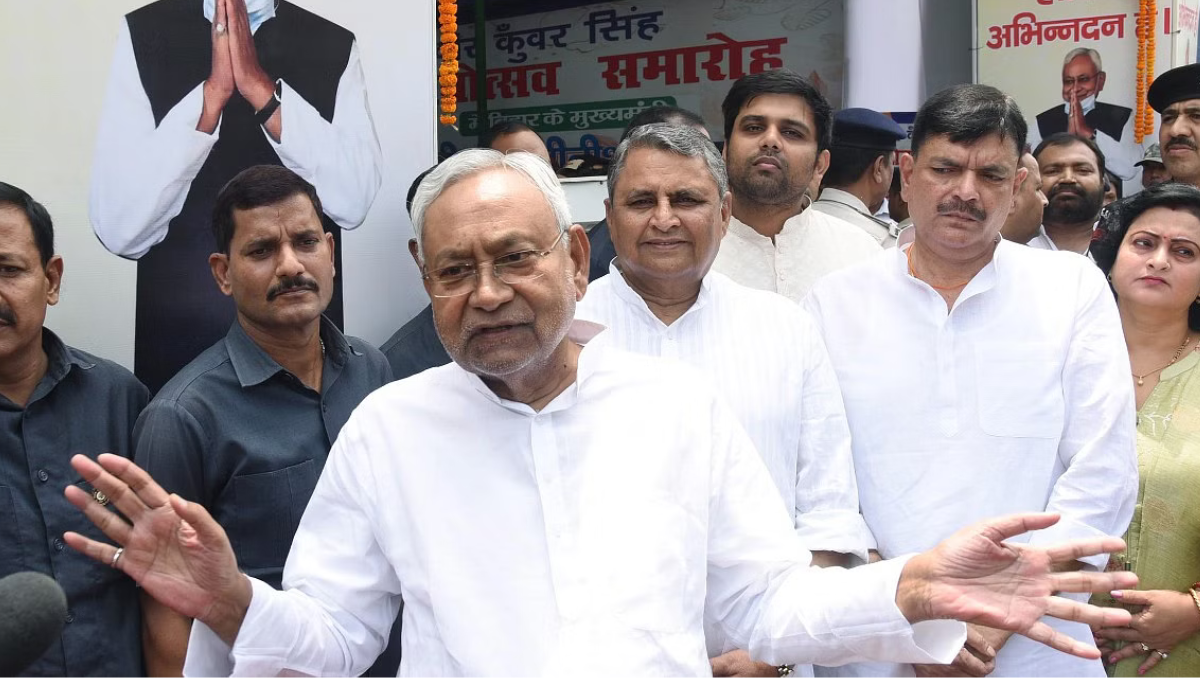The Bihar government recently conducted a ‘Bihar Caste Survey’ and has now released the results of the same. According to the survey, the share of Extremely Backward Classes (EBC) and Other Backward Classes (OBC) come together to form more than 63% of the population, while the ‘Unreserved Category’ or the ‘Forward Caste’ is about 15.5% of the total percentage of the State according to the census.
The last census on caste numbers was done in 1931. The caste has been a ‘Political Hot Topic’ linked to the demands for reservation and under BJP’s Central leadership has registered a caste census in the face of loud demands from opposition.
Bihar Caste Survey reveals that the EBC is the largest social group of Bihar comprising almost 4 crores individuals or 36% of the state’s population. The OBC number is around 3 crores or 27.1 percent and the Scheduled Caste comprises 2 crores, which totals up to 19.6 5% of the total state population. The Scheduled Tribe is around only 21,99,000, approximately 1.63 percent while the Unreserved Category comprises 2 crore individuals, which is around 15.5 2% of the total population.
Bihar’s current state population, according to the survey, is approximately 13 crores in comparison to the 10.41 crore of the 2011 census. The religious division in the state consists of 81.9 % Hindus and 17.7% Muslims. The population of Christians, Buddhists, Jain, Sikhs, and other religious denominations is minuscule.
How and when was the survey conducted?
After following an “All Party Meeting”, Chief Minister of Bihar, Nitish Kumar announced on June 1st, 2022 that all nine parties including the BJP Bihar unit unanimously decided to conduct the Bihar Caste Survey Caste. The funds allotted to the survey were Rs 500 crores from its contingency fund.
The first phase was to carry out the counting of the number of households in the state. The second phase was conducted on April 15th and was completed in about a month. The main aim of this phase was to collect data on religion, caste, and economic backgrounds. More than three lakh people, mainly government school teachers went from door to door with a 17-question form based on the above-mentioned factors. An app was then used to collect and store the data for tabulation and processing of the Bihar Caste Survey
What is the main reason behind the Bihar Caste Survey?
The main reason for the conduction of the Bihar Caste Survey was nothing but ‘Politics of Identity’ which is based on the reservation and caste assertion done by the backward class which allows socialist parties like Nitesh DJ you and Lalu Prasad RJD in Bihar to dominate the states for a quarter century.
The check results will amplify the call for adding the OBC share beyond 27, and for a share within the share for the EBCs. The Justice Rohini Commission, which has been examining the question of “sub-categorization” since 2017, submitted its report at the end of July — its recommendations aren’t yet public. The Bihar check may well push other countries to carry out analogous exercises.
The check data will also renew the longstanding debate over the 50 ceiling on reservation assessed by the Supreme Court in its corner ruling in Indra Sawhney v Union of India(1992). The ceiling was assessed to ensure “effectiveness ” in administration, and courts have since blocked several attempts by countries to transgress it.
Beyond Bihar, the estate Bihar Caste Survey has far-reaching counteraccusations for Indian politics and society. As data becomes more grainy, there’s growing pressure to recalibrate reservation proportions to ensure indifferent representation for marginalized communities (Jiski Jitni Sankhya Bhari, Uski Utni Hissedari). The findings will also impact public converse on the need for a comprehensive estate check at the pan-India position.
According to the report, EBCs constitute 36% of the population while presently they’re being given 18% reservation in jobs, while OBCs, at 27 percent, are presently being given 12% reservation. At present, there’s a provision for 30% for EBC and OBC together in Bihar, whereas according to estate-grounded computation, their population is at 63%.



